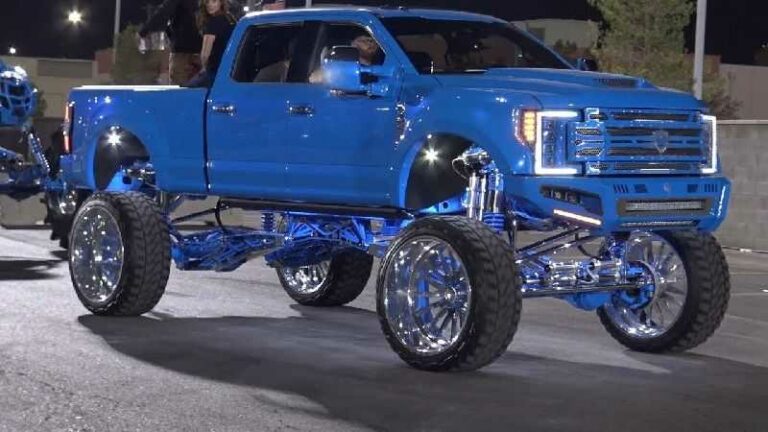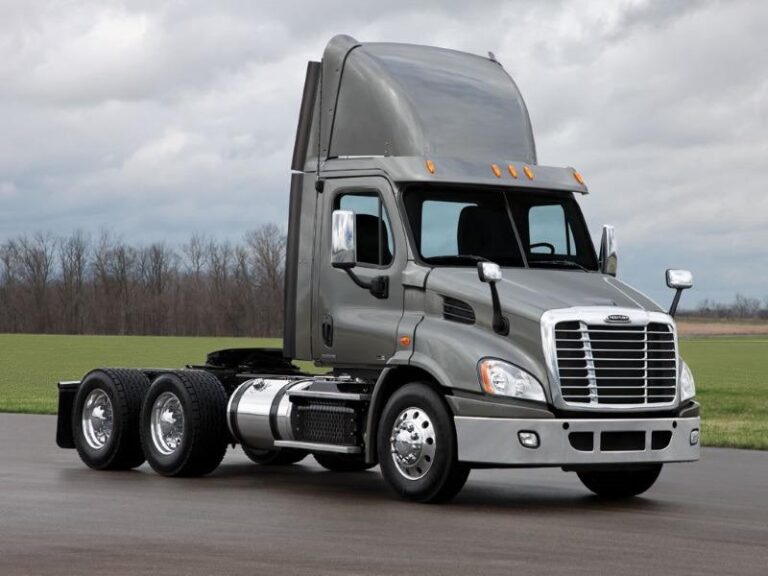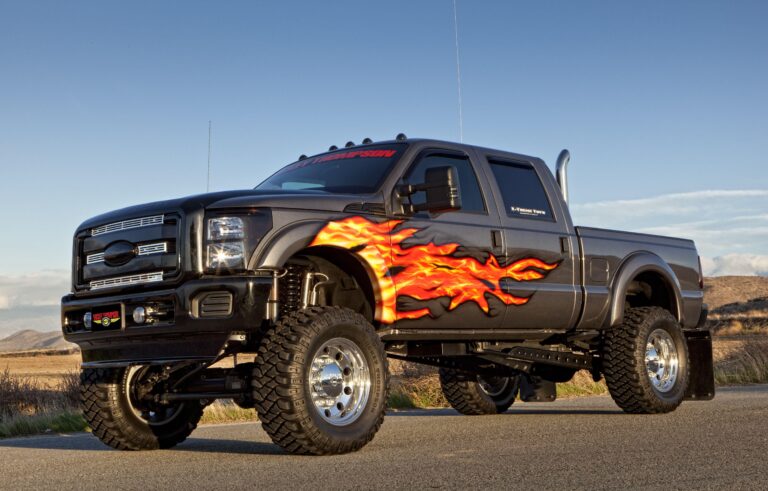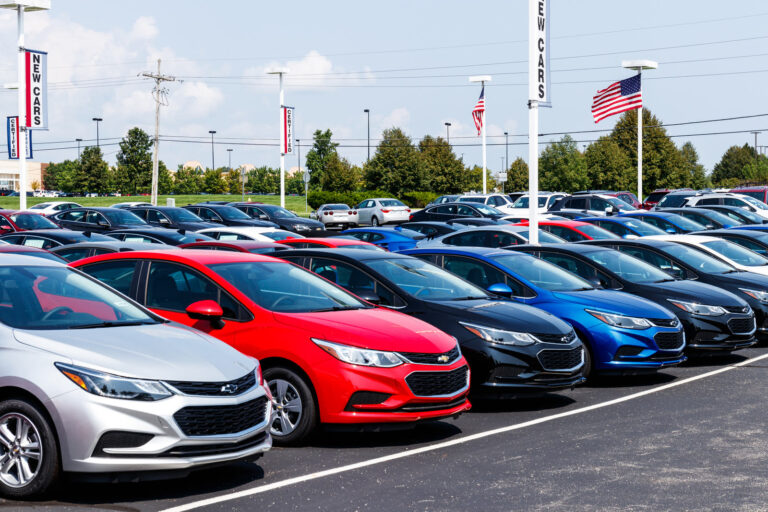Parts Of Truck Body: An In-Depth Guide to the Backbone of Commercial Transport
Parts Of Truck Body: An In-Depth Guide to the Backbone of Commercial Transport cars.truckstrend.com
In the vast ecosystem of commercial transport, the truck stands as an indispensable workhorse. While the engine and chassis provide the power and foundation, it is the truck body that truly defines its purpose and functionality. Far more than just an aesthetic shell, the truck body is a complex, engineered structure designed to safely and efficiently transport goods, materials, or even specialized equipment. Understanding the various parts of a truck body is crucial for anyone involved in logistics, fleet management, vehicle maintenance, or even just curious about these magnificent machines.
This comprehensive guide will delve into the anatomy of a truck body, exploring its diverse components, their functions, and the critical role they play in the efficiency, safety, and profitability of trucking operations.
Parts Of Truck Body: An In-Depth Guide to the Backbone of Commercial Transport
The Foundation: Understanding the Chassis and Frame
Before we dissect the "body" itself, it’s essential to clarify its relationship with the chassis. The chassis is essentially the truck’s skeletal structure, comprising the frame, engine, transmission, axles, suspension, and wheels. It’s the rolling platform upon which the body is mounted. The frame specifically refers to the robust, ladder-like structure of rails and crossmembers that forms the backbone, supporting all other components.
While technically part of the chassis, the frame’s integrity is paramount to the body’s performance. It must be strong enough to withstand the immense stresses of heavy loads, uneven terrain, and constant vibration, distributing weight evenly and providing a stable mounting point for the specialized body built upon it.
The Command Center: The Truck Cab
The truck cab is the driver’s domain, the nerve center from which the entire vehicle is controlled. It’s designed not just for functionality but also for driver comfort, safety, and visibility, directly impacting productivity and long-haul endurance.
Key components of the truck cab include:
- Windshield and Windows: Providing crucial visibility and protection from the elements. Modern cabs often feature large, expansive glass for maximum field of view.
- Doors: Entry and exit points, designed for durability and security.
- Dashboard and Controls: Housing the instrument panel, gauges, switches for lights, wipers, HVAC, and increasingly, advanced telematics and infotainment systems.
- Seating: Ergonomically designed seats with air suspension are common to reduce driver fatigue during long journeys.
- Steering Wheel and Column: For vehicle control.
- Sleeper Cab (for long-haul trucks): An integrated or extended section behind the driver’s seat, offering a bunk, storage, and sometimes amenities like a refrigerator or microwave, allowing drivers to rest and live on the road.
- Mirrors: Side mirrors, often large and multi-pane, provide essential blind-spot awareness.

Types of Cabs:
- Day Cab: Shorter, without a sleeping compartment, ideal for local or regional hauling.
- Sleeper Cab: Extended cab with a bed, common for over-the-road trucking.
- Crew Cab: Features a second row of seating for additional passengers, common in vocational trucks.
The Workhorse: Specialized Cargo Areas
This is where the truck body truly differentiates itself, tailored to the specific type of cargo or service it’s intended for. The design, materials, and features of the cargo area are critical for efficient and safe operation.
1. Flatbed Bodies
- Description: An open platform with no sides or roof, designed to carry oversized, oddly shaped, or palletized cargo that doesn’t require protection from the elements.
- Key Components:
- Decking: The flat surface, typically made of wood (oak, pine), steel, or aluminum.
- Rub Rails: Side rails that provide tie-down points for securing cargo.
- Stake Pockets: Slots along the sides for inserting stakes or side panels if needed.
- Headache Rack: A protective barrier behind the cab, shielding the driver from shifting cargo.
- Winches/Straps: Essential for securing loads.
- Uses: Construction materials, machinery, large pipes, lumber, pre-fabricated structures.
2. Box Truck Bodies (Dry Vans)
- Description: An enclosed, rectangular cargo area designed to protect goods from weather, theft, and damage.
- Key Components:
- Walls: Typically made of aluminum, fiberglass reinforced plywood (FRP), or composite materials.
- Roof: Often translucent fiberglass or aluminum to allow some natural light.
- Rear Doors: Common types include roll-up doors (space-saving, easy access) and swing doors (full opening, better seal).
- Subframe: A structure connecting the box to the chassis.
- E-track/L-track Systems: Internal rails for securing cargo with straps or shoring bars.
- Uses: General freight, moving services, retail deliveries, package delivery.
3. Refrigerated Truck Bodies (Reefers)
- Description: A specialized box body with insulated walls, roof, and floor, equipped with a refrigeration unit to maintain specific temperatures.
- Key Components:
- Insulated Panels: Thick, multi-layered panels with foam insulation (e.g., polyurethane) to prevent thermal transfer.
- Refrigeration Unit: A powerful cooling system mounted on the front or underside of the body, powered by its own diesel engine or the truck’s engine.
- Temperature Controls: Precise digital controls to set and monitor internal temperature.
- Ribbed Floors: Often aluminum, designed to promote airflow around cargo.
- Uses: Perishable foods, pharmaceuticals, chemicals, flowers.
4. Dump Truck Bodies
- Description: An open-top body with a hydraulic lift mechanism, allowing the entire bed to tilt upwards to unload bulk materials.
- Key Components:
- Bed: Constructed from heavy-duty steel or aluminum, designed to withstand abrasive materials.
- Tailgate: Can be fixed, swinging, or high-lift for controlled dumping.
- Hydraulic Cylinder and Hoist: The power system that lifts the bed.
- Frame/Subframe: Reinforced to handle the stress of lifting heavy loads.
- Uses: Sand, gravel, dirt, asphalt, demolition debris, agricultural products.
5. Tanker Truck Bodies
- Description: A specialized body consisting of a large tank designed to transport liquids, gases, or dry bulk materials.
- Key Components:
- Tank: Made from materials specific to the cargo (e.g., stainless steel for food-grade liquids, aluminum for fuel, carbon steel for crude oil).
- Baffles: Internal partitions to prevent sloshing of liquids, improving stability.
- Manholes/Hatches: Access points for cleaning and inspection.
- Valves and Pumps: For loading and unloading the cargo.
- Safety Features: Pressure relief valves, emergency shut-offs.
- Uses: Fuel, chemicals, milk, water, cement, grains.
6. Specialty Bodies
Beyond these common types, an array of highly specialized truck bodies exists for specific industries:
- Service/Utility Bodies: Compartmentalized storage for tools and equipment (e.g., for plumbers, electricians).
- Refuse/Garbage Trucks: Compacting mechanisms for waste collection.
- Concrete Mixers: Rotating drum for transporting and mixing concrete.
- Car Carriers: Ramps and decks for transporting multiple vehicles.
- Tow Trucks: Winches and booms for vehicle recovery.
- Fire Trucks: Compartments for hoses, ladders, pumps, and water tanks.
External Components and Accessories
Several essential components are mounted externally, contributing to the truck body’s overall functionality, safety, and compliance.
- Lighting: Beyond headlights and taillights, trucks feature marker lights, clearance lights, brake lights, and turn signals strategically placed for maximum visibility, especially at night or in adverse weather.
- Bumpers: Robust front and rear bumpers provide impact protection for the chassis and cab.
- Fenders and Mudguards: Crucial for preventing road spray, rocks, and debris from being thrown by the tires, protecting other vehicles and pedestrians.
- Fuel Tanks: Large capacity tanks for extended range, typically mounted on the frame rails.
- Exhaust System: Directs engine exhaust away from the vehicle, incorporating mufflers and catalytic converters for noise reduction and emissions control.
- Toolboxes and Storage: External compartments for storing chains, tools, spare parts, and personal gear.
- Aerodynamic Devices: Fairings, side skirts, and roof deflectors designed to reduce air drag and improve fuel efficiency.
- Underride Guards: Rear and side guards to prevent smaller vehicles from sliding underneath the truck in a collision.
Important Considerations for Truck Body Parts
When selecting, maintaining, or modifying a truck body, several factors are paramount:
- Material Selection: The choice of materials (steel, aluminum, FRP, wood) significantly impacts durability, weight, cost, and corrosion resistance. Aluminum bodies are lighter, improving payload capacity and fuel efficiency, but are often more expensive. Steel is robust but heavier.
- Maintenance and Longevity: Regular inspection for rust, cracks, dents, and wear is crucial. Proper cleaning, lubrication of moving parts (like hinges, roll-up doors), and prompt repairs extend the body’s lifespan.
- Safety Regulations and Compliance: Truck bodies must adhere to strict local and national regulations (e.g., DOT in the US) regarding dimensions, lighting, conspicuity markings, underride protection, and securement systems. Specialized bodies (e.g., hazmat tankers) have additional stringent requirements.
- Weight Distribution and Payload: Understanding the body’s tare weight and how it affects the overall gross vehicle weight rating (GVWR) and payload capacity is vital. Improper weight distribution can lead to handling issues, tire wear, and even structural damage.
- Aerodynamics: The design of the body, especially for box trucks, significantly impacts fuel consumption. Smooth surfaces, rounded edges, and aerodynamic add-ons can reduce drag.
- Customization vs. Standard: While standard bodies are cost-effective, many operations benefit from customized features, internal configurations, or specialized access points tailored to their unique needs.
Practical Advice and Actionable Insights
- Define Your Needs First: Before acquiring a truck, meticulously determine the type of cargo, weight, volume, environmental conditions, and specific operational requirements. This dictates the optimal body type and features.
- Prioritize Durability and Safety: Invest in quality materials and construction. A robust body reduces downtime, maintenance costs, and enhances safety for both cargo and personnel.
- Consider Lifecycle Costs: While initial purchase price is a factor, evaluate the long-term costs including maintenance, fuel efficiency, and potential payload gains from lighter materials.
- Regular Inspections are Non-Negotiable: Implement a routine inspection schedule for the entire body, checking for structural integrity, door functionality, light operation, and securement points.
- Load Securely and Properly: Always use appropriate tie-downs and loading techniques to prevent cargo shifting, which can damage the body and pose a significant safety hazard.
- Consult Experts: Work with reputable truck body manufacturers and upfitters. Their expertise can ensure your truck body is perfectly matched to your operational demands and regulatory compliance.
Concluding Summary
The parts of a truck body are far more than just metal and plastic; they represent a carefully engineered system designed to meet the rigorous demands of commercial transport. From the driver’s command center in the cab to the specialized cargo areas and the myriad of external components, each part plays a vital role in ensuring efficiency, safety, and profitability. Understanding these components and the considerations involved in their selection and maintenance is key to maximizing the lifespan and performance of these indispensable vehicles. A well-chosen and properly maintained truck body is not just an expense; it’s a strategic investment in the success of any operation relying on the power of the open road.
Price Table: Estimated Costs for Common Truck Body Parts & Types
Disclaimer: Prices are highly variable and depend on brand, material, size, features, customization, market conditions, and installation costs. The figures below are estimates in USD for new parts/bodies and should be used as a general guide only. Always obtain specific quotes from suppliers.
| Part/Body Type | Description | Estimated Price Range (USD) | Key Factors Affecting Price |
|---|---|---|---|
| Complete Truck Bodies | |||
| Dry Van Body (16-26 ft) | Enclosed box, aluminum/FRP walls, roll-up or swing door | $10,000 – $30,000 | Length, material, door type, insulation, interior features |
| Refrigerated Body (16-26 ft) | Insulated box with refrigeration unit, ribbed floor | $25,000 – $60,000+ | Length, insulation thickness, refrigeration unit capacity, brand |
| Flatbed Body (16-26 ft) | Open platform, steel or aluminum decking | $7,000 – $20,000 | Length, decking material, headache rack, rub rail quality |
| Dump Body (10-16 ft) | Steel or aluminum bed, hydraulic hoist, tailgate | $15,000 – $45,000+ | Material (steel/aluminum), capacity, hoist type, special features |
| Service Body (8-11 ft) | Compartmentalized body for tools and equipment | $5,000 – $15,000 | Length, material, number/type of compartments, shelving |
| Tanker Body (for chassis) | Specific for liquids/gases, material varies by cargo | $30,000 – $100,000+ | Tank material, capacity, baffles, pumps, safety features |
| Individual Parts | |||
| Truck Cab (new) | Bare cab shell, without interior or accessories | $15,000 – $40,000+ | Make, model, size (day/sleeper), material, features |
| Truck Door (new) | Single replacement door for cab | $800 – $3,000+ | Make, model, material, power window/lock features |
| Windshield (replacement) | Front glass | $400 – $1,500+ | Make, model, sensor integration, installation |
| Side Mirror (assembly) | Complete mirror unit (power, heated, chrome) | $150 – $800+ | Make, model, features (power, heated, camera) |
| Truck Bumper (front) | Steel or chrome | $300 – $1,500+ | Material, finish, make/model, sensor cutouts |
| Headlight Assembly | Complete headlight unit | $200 – $800+ (per side) | LED vs. Halogen, make/model, integrated DRLs |
| Taillight Assembly | Complete taillight unit | $100 – $400+ (per side) | LED vs. Incandescent, make/model |
| Mud Flaps (pair) | Rubber or poly, with hangers | $50 – $200 | Material, size, branding, anti-sail features |
| Fifth Wheel (new) | For tractor-trailer connection | $1,500 – $5,000+ | Type (fixed/sliding), capacity, brand |
| Hydraulic Cylinder (dump) | Main lifting cylinder | $1,000 – $5,000+ | Capacity, stroke length, brand |
| Roll-up Door (rear) | For box truck/dry van | $800 – $2,500+ | Size, material (aluminum/FRP), brand |
| E-Track Rail (10 ft) | Internal cargo securement rail | $30 – $80 | Material, length, strength |
Frequently Asked Questions (FAQ) about Truck Body Parts
Q1: What is the main difference between a truck chassis and a truck body?
A1: The chassis is the complete operational base of the truck, including the frame, engine, drivetrain, axles, suspension, and wheels. It’s the "rolling platform." The truck body is the specialized structure mounted onto the chassis, designed to carry the specific cargo or perform a particular function (e.g., a dry van, flatbed, dump body, etc.).
Q2: How often should truck body parts be inspected?
A2: Daily pre-trip and post-trip inspections are crucial for basic safety components (lights, mirrors, doors, securement points). A more thorough visual inspection should be performed weekly or bi-weekly. Comprehensive professional inspections of the body’s structural integrity, rust, and specialized systems (e.g., refrigeration units, hydraulics) should be part of a regular preventive maintenance schedule, typically every 3-6 months or as recommended by the manufacturer.
Q3: Can I customize my truck body after purchase?
A3: Yes, extensive customization is possible. Many truck bodies are designed with modularity in mind. Common modifications include adding shelving, interior lighting, additional securement points, liftgates, toolboxes, or specialized equipment. However, any major structural modification should be performed by a professional body builder to ensure safety, proper weight distribution, and compliance with regulations.
Q4: What are the most common materials used for truck bodies, and what are their pros and cons?
A4:
- Steel: Very strong, durable, and cost-effective. However, it’s heavy and prone to rust if not properly coated. Ideal for heavy-duty applications like dump trucks.
- Aluminum: Lighter than steel, leading to better fuel efficiency and increased payload capacity. It’s also corrosion-resistant. However, it’s generally more expensive and can be less impact-resistant than steel. Common for dry vans, reefers, and flatbeds.
- FRP (Fiberglass Reinforced Plywood): Strong, durable, good insulation properties, and a smooth surface for decals. Often used for walls in dry vans and reefers. Can be prone to delamination if damaged.
- Wood: Primarily used for flatbed decking (oak, pine). It’s affordable and provides good traction, but requires more maintenance (sealing, replacement) and can be susceptible to rot and insects.
Q5: How does the truck body affect fuel efficiency?
A5: The truck body significantly impacts fuel efficiency, especially for enclosed bodies. The primary factor is aerodynamics. A less aerodynamic body creates more air resistance (drag), forcing the engine to work harder and consume more fuel. Features like smooth walls, rounded corners, roof fairings, and side skirts are designed to reduce drag and improve fuel economy. The body’s weight also plays a role; lighter materials (e.g., aluminum over steel) reduce the overall vehicle weight, requiring less energy to move.
Q6: What are common signs of wear and tear on a truck body that require attention?
A6:
- Rust and Corrosion: Especially in steel components, indicative of a need for cleaning, treatment, or replacement.
- Cracks or Dents: Can compromise structural integrity, especially on walls, floors, or the frame.
- Malfunctioning Doors/Gates: Sticking, not sealing properly, or difficulty opening/closing can indicate hinge issues, frame distortion, or damage.
- Worn or Damaged Securement Points: Rub rails, E-track, winches, or tie-downs that are bent, cracked, or corroded can lead to unsecured cargo.
- Failing Lights: Dim, flickering, or non-functional lights are a major safety and compliance issue.
- Fluid Leaks: Around hydraulic systems (dump trucks) or refrigeration units.
- Excessive Vibration or Noise: Could indicate loose components, structural fatigue, or issues with mounted equipment.





